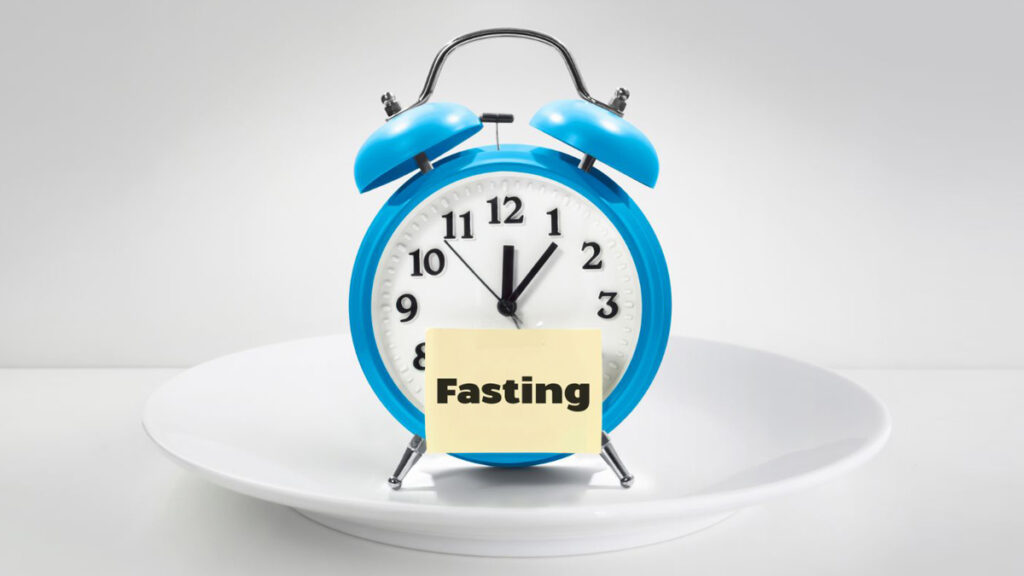What would you think about losing weight without following a boring diet plan or working hours at the gym? Sounds great, right? When it comes to shedding those extra kilos, consistency is key. Following a strict boring diet that isn’t sustainable in the long run won’t let you lose weight. That’s where intermittent fasting works better.
Intermittent fasting is an eating pattern that promotes short-term fasts. It involves periods of minimal or no food consumption. Many studies suggest it as a weight loss intervention that helps us eat fewer calories that may result in weight loss over time.
In this article, you can discover everything that you should know about weight loss through intermittent fasting.
What is intermittent fasting for weight loss?
More than a weight-loss method, intermittent fasting is a healthy eating pattern that asks you to consume your food by following a strict eating schedule. It usually focuses on when you eat rather than what you eat. Research reveals that the human body has the ability to survive without food for several days.
When it comes to weight loss, most people do not follow a proper eating pattern! That’s the main reason why they didn’t find better results from their efforts. Even when they are on a diet, most of them have the tendency to binge on snacks, processed foods, post-dinner, etc. This may result in heart ailments, obesity, and many other illnesses that have the power to threaten your life.
Meanwhile, Intermittent Fasting can promote good health by helping you tackle all the above-mentioned issues. When we fast for long, our body will automatically turn into starvation mode where it gets depleted of sugar reserves and starts to burn unwanted fat. This process is also widely known as metabolic switching.
Metabolic Switching is exactly what lets your belly fat get drastically reduced during intermittent fasting. During the course of your intermittent fasting, your body will start to burn fat reserves rapidly as you increase gaps between your meals. It will also help in the autophagy process where your body removes waste materials.
What are the different types of Intermittent Fasting?
Each individual’s body is unique and only different styles will suit different individuals. There are different ways of intermittent fasting available for different requirements. The methods vary in the number of fast days and the calorie allowances. So, it’s time to take a look at the research behind the most popular types of intermittent fasting and discover how to maintain that type of diet.
- Fast for 12 hours a day

The rules for this type of intermittent fasting are so simple. Here, an individual only needs to decide on and adhere to a 12-hour fasting schedule per day. This type of intermittent fasting plan is an ideal choice for beginners as its fasting window is relatively small.
The most convenient way to do the 12-hour fast is to include the period of sleep in the fasting window.
For example, an individual can opt to fast between 7 p.m. and 7 a.m. Here, he or she would only need to finish their dinner before 7 p.m. and wait for the next morning at 7 a.m. to have breakfast. Here, he/she would be sleeping for much of the time in between.
- Fasting for 16 hours

Fasting for 16 hours a day is also known as the 16:8 method or the Leangains diet. This type of intermittent fast is helpful for those who have already tried the 12-hour fast but did not see any considerable results. On this type of intermittent fasting, individuals have to finish their dinner by 8 p.m. and then have to skip breakfast. It is advised to not eat anything until noon.
During this 16:8 intermittent fasting, men have to fast for 16 hours each day, and women have to fast for 14 hours.
- Fasting for 2 days a week

Fasting for 2 days a week is widely known as 5:2 Intermittent Fasting as five days of the week are normal eating days, while the other two restrict calories to 500–600 per day. For example, if an individual went fasting on a Monday and Thursday, he can eat normally on the other days. There should be at least 1 non-fasting day between fasting days.
The 5:2 diet is a type of intermittent fasting where the calorie intake is limited to 500–600 calories per day two times per week. During this 5:2 fasting method, men usually consume 600 calories and women 500 calories.
Most people consider this type of intermittent fasting to be easier to stick to than a traditional calorie-restricted diet. Studies found that this diet to be good for reducing insulin levels and improving insulin sensitivity among participants.
- Alternate-Day Fasting

Alternate-Day Fasting ADF) is an intermittent fasting approach that promotes a complete avoidance of solid foods on fasting days, while you can eat whatever you want on the non-fasting days. The most common version of this ADF diet is the “modified” fasting, in which the participants can eat around 500 calories on fasting days.
As the name suggests, the basic idea behind Alternate-Day Fasting is that: if an individual fasts on one day, he or she can eat anything the next day. Studies among individuals with overweight and obesity found that the practice of ADF will help in losing 3–8% of the body weight in 2–12 weeks. The effects of the ADF method on hunger are inconsistent. Research on modified alternate-day fasting suggests that hunger decreases as an individual adapt to this diet.
Research shows that Alternate-day fasting is equally effective at decreasing weight and fat mass. In addition to this, it is good to lower risk factors related to heart disease and type 2 diabetes.
Note: Alternate-day fasting is an extreme form of intermittent fasting. Thus, it may not be suitable for beginners or those with certain medical conditions.
- A weekly 24-hour fast

This method is also called the Eat-Stop-Eat diet. This is the type of intermittent fasting that advocates fasting completely for 1 or 2 days a week. This means – eating no food for 24 hours at a time. Here, individuals must fast from breakfast to breakfast or lunch to lunch.
This is the most challenging type of fasting and it may cause fatigue, headache, or irritability. So, this is not suitable for beginners or those with certain medical conditions.
- Meal skipping

This is the most flexible type of intermittent fasting that is suitable for beginners. It involves occasionally skipping meals. In this method, participants can decide which meals to skip according to their level of hunger or time restraints. Most people consider this type of intermittent fasting as more natural than the other fasting methods.
- The Warrior Diet

The Warrior Diet is considered an extreme form of intermittent fasting. The Warrior Diet generally involves eating very little. This means participants can only have a few servings of raw fruit and vegetables during their fasting window. After that, they can enjoy one large meal at night. The eating window is usually only around 4 hours. This type of fasting is good for individuals who have already tried other types of intermittent fasting.
Tips for Maintaining Intermittent Fasting
It may be challenging for us to stick to an intermittent fasting program.
Here are the tips that may help us stay on track and maximize the benefits of intermittent fasting:
- Staying hydrated throughout. Try to drink lots of water and calorie-free drinks.
- Avoiding obsessing over food.
- Avoid strenuous activities on fasting days.
- Stay relaxed and have enough rest.
- Eat nutrient-dense foods that are rich in protein, fiber, and healthful fats.
- Include food items that may help to reduce feelings of hunger. For example, garlic, herbs, spices, vinegar, etc.
Hope you have gotten a better idea on how intermittent fasting can help you lose weight.

